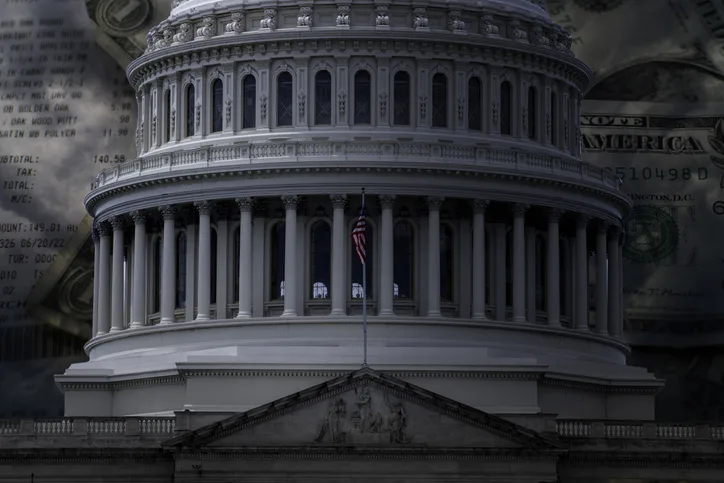Trump’s tariffs and the warehouse automation market
The latest round of tariffs introduced by US President Donald Trump is set to create significant disruptions in global supply chains. Rueben Scriven asks what impact it could have on the warehouse automation sector.

AS WE continue analysing the long-term implications of these tariffs and updating our market models accordingly, we wanted to share our initial impressions. Below, we outline what we believe to be the six most significant effects of these tariffs on the warehouse automation market.
Slowdown in capital investments due to uncertainty
One of the most immediate consequences of the tariffs is the likely to be a slowdown in capital investments in warehouse automation, driven by increased economic uncertainty. Our discussions with automation vendors indicate their customers are becoming increasingly concerned, leading to delays in major automation projects. Many decision-makers are hesitant to approve large capital expenditures (CapEx), fearing that future policy changes could undermine their investments. Indeed, we’re currently experiencing the greatest levels of uncertainty around economic policy since the peak of the pandemic.
This uncertainty is expected to lengthen sales cycles for warehouse automation solutions, particularly for high-cost, end-to-end systems that require long-term planning. The impact is further exacerbated by the already high-interest-rate environment, which has been dampening investment activity for the past three years.
It’s important to note we had already assumed a period of ‘acclimation’ to Trump’s policies and our forecasts therefore already account for a period of hesitation in demand in 2025 going into 2026. However, there’s potential for the magnitude of tariffs announced to justify a further downgrade to our 2025 and 2026 projections.
Growth of third-party logistics (3PL) firms and increased automation investments
As tariffs add complexity to supply chains, more companies are likely to outsource logistics to third-party logistics (3PL) providers that specialise in managing trade policy shifts and supplier diversification. This trend is expected to drive greater adoption of automation by 3PLs, particularly those handling cross-border trade.
Given the diverse range of customers that 3PLs serve and the wide variety of stock-keeping unit (SKU) profiles they manage, these firms tend to favour flexible automation solutions such as person-to-goods autonomous mobile robots (AMRs) and right-sized packaging systems.
Increase in inventory levels and warehouse demand
Tariffs often lead to supply chain restructuring as businesses seek alternative sourcing strategies. To avoid potential disruptions, many companies are expected to build up inventory reserves, leading to increased warehouse occupancy.
We have already observed this trend in the two months leading up to “Liberation Day,” and we anticipate it will accelerate due to the scale and scope of the new tariffs. The resulting rise in inventory levels will reduce warehouse vacancy rates and drive-up rent prices in key logistics hubs. This, in turn, may lead to increased warehouse construction activity to accommodate growing inventory needs.
Reduced investment in durable manufacturing warehouse automation in Southeast Asia, Canada, and Mexico
Before the latest tariffs, manufacturers had been shifting production to Southeast Asia, Canada, and Mexico in response to the US China trade war and post-pandemic nearshoring trends. These regions had been benefiting from increased investment in warehouse automation to support durable manufacturing operations.
However, with renewed trade policy uncertainty, businesses are likely to pause large-scale automation investments in these regions. Until there is greater clarity on future tariff levels, many companies will delay expansion plans, slowing the deployment of warehouse robotics and automated systems in these locations.
Reduced ROI for automation in the US due to 25% steel tariff
The 25% tariff on steel will have a direct impact on warehouse automation by significantly increasing the cost of automation equipment. Since most warehouse automation systems—including robotic solutions, conveyor belts, and storage infrastructure—rely heavily on steel, this tariff will drive up material costs.
Importantly, this tariff is unlikely to differentiate between domestic and international vendors. As demand for US steel rises, domestic prices are expected to increase, negating any cost advantage for locally sourced steel. As a result, businesses investing in automation will face lower returns on investment (ROI), potentially leading to delays or scaled-down automation projects.
There is speculation that rising steel costs could push some companies toward mobile automation, given that mobile solutions have a lower steel dependency compared with fixed infrastructure. However, when we spoke with vendors at ProMAT, there was no clear consensus on whether this would meaningfully shift investment preferences.
Changes in eCommerce flows as a result of changes to the Di Minimis loop hole
In most cases, orders from Shein and Temu have not been subject to import duties due to the De Minimis rule, which allows international shipments with a retail value of $800 or less to bypass import taxes and customs inspections. This rule has become a contentious issue in recent years and is widely viewed as a loophole that many Chinese retailers have exploited to avoid tariffs on low-cost goods sold through eCommerce platforms.
While this development may seem like a footnote compared to the broader set of tariffs announced on April 2nd, the potential impact is significant. We anticipate three major effects resulting from changes to the De Minimis policy:
Expansion of US-based fulfillment centres by Shein and Temu
As cross-border shipping becomes less cost-effective, we’re likely to see companies like Shein and Temu begin leasing more fulfillment space within the United States. This shift toward domestic warehousing will help them reduce exposure to new tariffs and streamline last-mile delivery operations.
Changes in packaging standards
If Shein and Temu relocate their fulfillment operations to the US, we can also expect changes in how their products are packaged. Currently, their shipments are typically delivered in small, minimally wrapped polybags. These packages often cause issues for parcel carriers, as they can get caught in sortation systems or fall between conveyor modules due to their size and packaging quality.
With a domestic fulfillment model, US-based parcel operators are likely to enforce stricter packaging requirements—favouring formats better suited to existing automated sorting infrastructure.
Opportunity for US retailers to regain market share
If, as expected, the volume of orders from Shein and Temu slows in the short term, it could create a window of opportunity for US-based apparel and general merchandise retailers to capture some of that market share. As a result, we may see increased investment in domestic fulfillment capacity by American eCommerce and fast-fashion brands looking to fill the gap.
Conclusion
Trump’s tariffs are introducing significant uncertainty into the warehouse automation market, affecting investment decisions, supply chain strategies, and logistics infrastructure. While some sectors (such as 3PLs and warehouse construction) may experience growth, others (such as durable manufacturing automation in Southeast Asia, Canada, and Mexico) are likely to see slowdowns. Additionally, the 25% steel tariff is set to reduce ROI for automation investments across the board.
As the situation evolves, we will continue providing research and analysis to ensure our market forecasts reflect the latest developments.
For more insights into how these tariffs will impact specific warehouse automation technologies, contact Rueben Scriven, Research Manager for Warehouse Automation at Interact Analysis: rueben.scriven@interactanalysis.com




